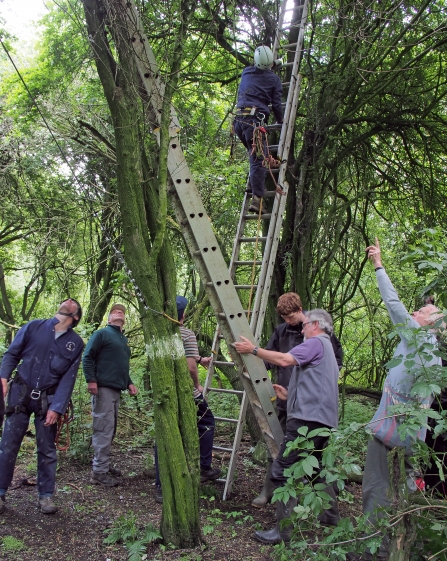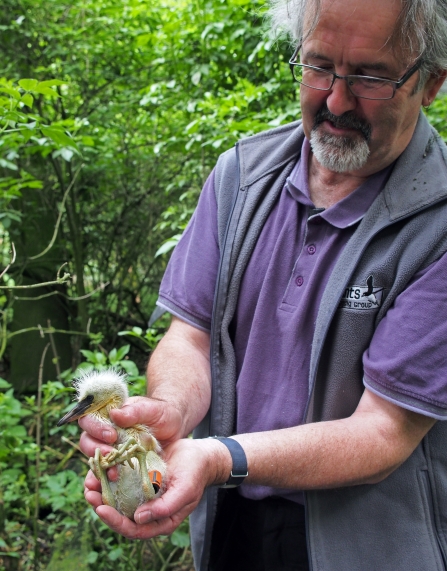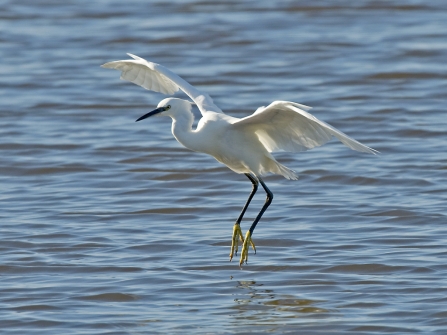The recent ‘Treswell Conference’ brought together volunteers and academics involved in monitoring bird populations, dormice numbers and other wildlife at Treswell Wood Nature Reserve and highlighted the value of volunteers in the recording programme. Monitoring of bird populations and breeding successes at Treswell started back in the 1970s making it one of the most recorded wildlife areas in the UK. However, we do have longstanding recording programmes on other reserves too. At Attenborough we run a Common Bird Census and Wetland Birds Survey, and more recently members of the South Notts Ringing Group have been assiduously recording the number of birds using the nesting tubes built into the Sand Martin Hide.
Volunteers vital in efforts to record and monitor wildlife
The North Notts Ringing Group along with expert climbers help to monitor the heronry.

The North Notts Ringing Group along with expert climbers help to monitor the heronry.
Another site with a long history of volunteer recording effort is our Besthorpe Reserve in the Trent Vale area between the villages of Collingham and Besthorpe. The North Notts Ringing Group has been monitoring the heronry on the island within Mons Pool since around 1990, and in more recent years volunteers have been instrumental in recording and tracking the establishment of the county’s first breeding colony of little egret.
In recent years the number of little egret nests has sometimes exceeded the number of heron nests – an astonishing state of affairs given that little egrets weren’t confirmed as a UK breeding bird until 1996 and the first recorded breeding in Nottinghamshire was at Besthorpe in 2013.
As well as monitoring numbers the Ringing Group now uses special ‘colour rings’ to help track the distribution of young birds more readily. These rings are much larger than the traditional small metal rings often used in ringing programmes and whereas traditionally records of birds would only have been made if a bird was recaptured or found dead, these new rings feature a code which is visible with binoculars or even the naked eye if you are able to get close enough.

Jim Lennon, one of the dedicated ringers, with a little egret chick.
As a result, sightings of young egrets raised at Besthorpe have been recorded locally at reserves such as Netherfield Lagoons, Carsington Water and Rutland Water, and much further afield at sites including Saltfleetby National Nature Reserve on the Lincolnshire coast and High Wycombe in Buckinghamshire.
Bird ringing and census records as well as wild flower surveys, butterfly records and other survey work is essential to help us monitor the health of our nature reserves as well as informing reserve management decisions, so we applaud everyone involved in recording, not just on our nature reserves, but across the county and beyond.

Little egret in flight - Photo credit: Mike Vickers
Get Involved
If you already collect wildlife records on our nature reserves or would like to get involved, please contact Michael Walker using our contact form.
For details of our latest wildlife identification courses see your Wildlife What’s On guide or view them online.

